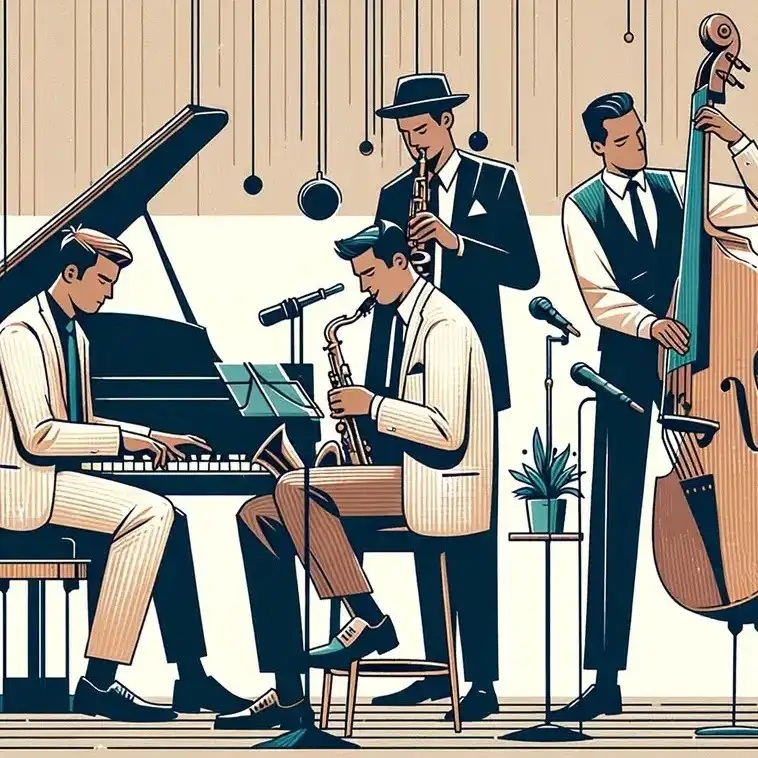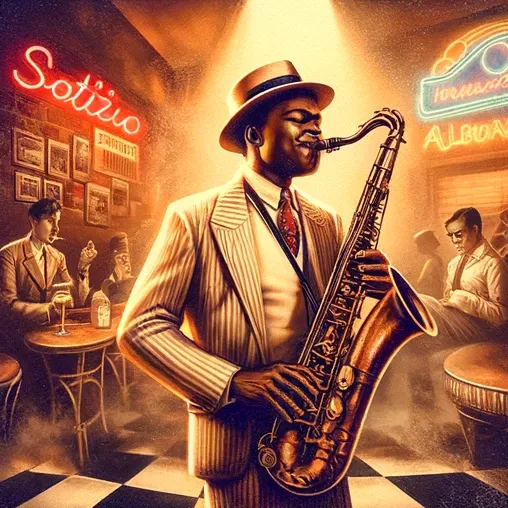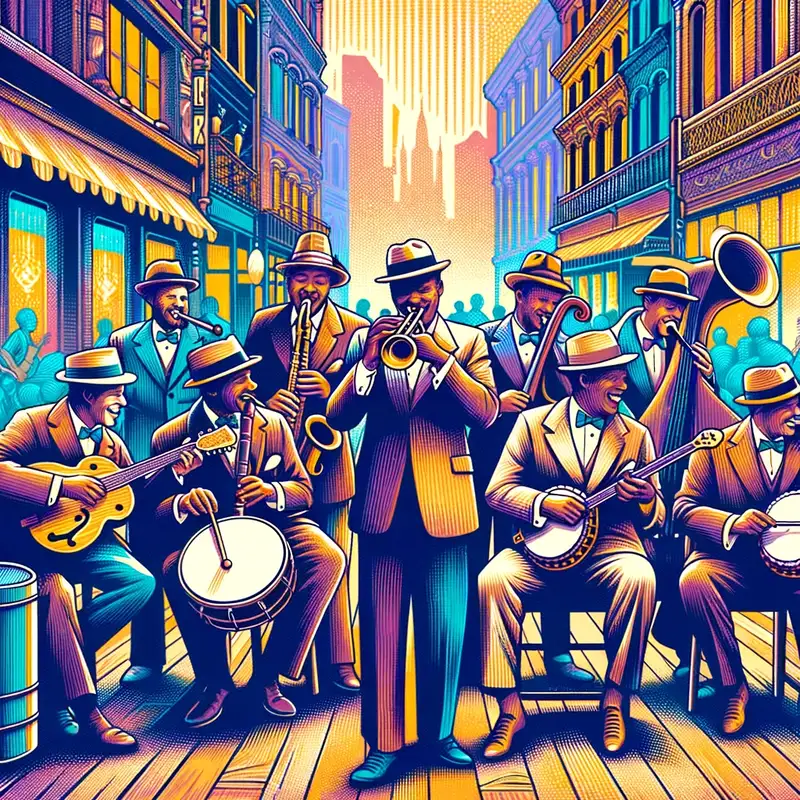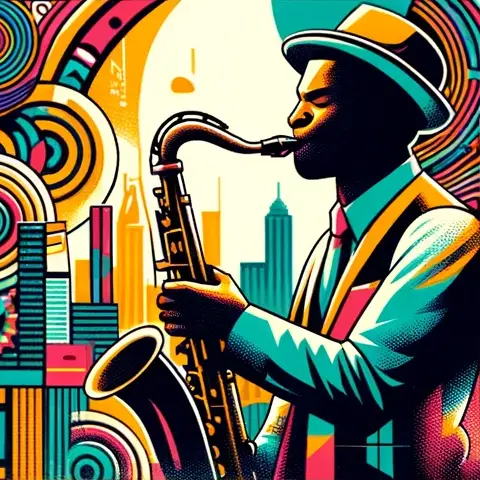Modal Jazz

Born in the late 1950s, Modal Jazz is like the yogi of the jazz world, focused less on harmonic complexity and more on simple scales, or “modes.” Imagine a painter using just a few colors but creating the most vivid and deep paintings you’ve ever seen. That’s Modal Jazz!
Table of Contents
Who’s Who in Modal Jazz?
Before we go any further, let’s give a shoutout to the trailblazers:
- Miles Davis: The genius who kicked it off with “Kind of Blue,” an album every human should hear at least once.
- John Coltrane: His album “A Love Supreme” is like a Modal Jazz manifesto.
- Bill Evans: The pianist who wove classical influences into the genre.
- Herbie Hancock: Took Modal Jazz into funky new terrains with albums like “Maiden Voyage.”
The Instrumentals
Expect to hear the usual jazz gang – piano, sax, trumpet, bass, drums – but played in a way that sounds almost like a spiritual chant at times. It’s the same crew, but they’re exploring new galaxies.
How Modal Jazz Works
- Fewer Chords, More Modes: Instead of cycling through a bunch of chords, Modal Jazz tunes often stick to one or two modes for extended periods.
- Freedom to Explore: Musicians get a lot of leeway to create solos that are not just intricate, but emotionally profound.
- Rhythmic Variety: From slow-burning rhythms to fast-paced beats, Modal Jazz has got it all.
Is Modal Jazz Alive Today?
Whether it’s in progressive rock, electronic music, or even hip-hop, the influence of Modal Jazz is everywhere. Artists like Kamasi Washington are bringing a fresh, modern take on the genre.
Why You Should Give Modal Jazz a Listen?
If you’re the kind of person who likes to dig deep – into music, thoughts, life, whatever – then Modal Jazz is your jam. It offers a different type of intellectual and emotional stimulation that’s hard to find in other genres. Modal Jazz isn’t just a subgenre; it’s an experience. It has a certain spiritual undertone that can make you feel like you’re meditating with your eyes open.
Quick Tips to Get You Started
So, ready to get started? Try giving Miles Davis’ “So What” or John Coltrane’s “My Favorite Things” a listen.
FAQ
What Is Modal Jazz?
Modal Jazz is a jazz subgenre that focuses on musical modes instead of chord progressions. This means fewer chords and more room for improvisation around a particular scale or “mode.”
How Is Modal Jazz Different from Other Jazz Subgenres?
Modal Jazz minimizes chord changes to focus on scales or modes. This gives musicians more freedom to improvise and offers listeners a more reflective, spiritual experience.


